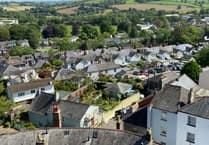Richard Howell, of North Huish, South Brent, writes: In the coming weeks planning officers, ward councillors and in some cases members of South Hams Council's development management committee will have to decide whether to permit the erection of three mobile-phone masts. Ranging in height from around 50ft to more than 130ft and located in Cornwood, Kingston and North Huish, these ugly lattice masts will occupy prominent positions within the Area of Outstanding Natural Beauty, in some cases close to important heritage assets. The funding for the masts is coming from the Government as part of its mobile infrastructure project and is intended to bring the 'considerable and varied benefits of high-speed wireless communications to assist in reducing the digital divide, increasing economic opportunity and improving the social well-being of the local population.' These aspirations and objectives are echoed in the Mobile Operators Association's code of best practice. 'High-quality communications infrastructure is essential for sustainable economic growth,' it claims. 'The development of high-speed broadband technology and other communications networks plays a vital role in enhancing the provision of local community facilities and services.' It is hard to disagree. With the likes of Defra and other national and local government bodies now insisting that we communicate with them online, having a high-speed internet connection has become essential. Regrettably, however, and as proposed, these masts will do nothing to reduce the digital divide. That's because, for 90 per cent of mobile-phone users, the masts will only offer a 2G connection, typically no faster than 50 kilobits per second. Subscribers to the 3 network, around one in 10 of all mobile-phone users, will at least obtain a 3G signal of around two megabits per second, although sadly a speed still largely insufficient to cope with modern mobile working demands. Yet according to Ofcom, around 70 per cent of all UK households already enjoy a 4G connection, a figure predicted to increase to more than 90 per cent by the end of next year, and one more than is sufficient to offer internet access at speeds many rural dwellers in the South Hams can only dream of. Consequently, it seems ridiculous to allow these masts to be erected, merely to house effectively obsolete technology with no real prospect of any subsequent upgrade. To this day the network operators have not thought it financially viable to erect even one of the three masts at their own expense. With little likelihood of dramatic increases in the numbers living within any of the coverage areas, that assessment is unlikely to change. Similarly, given the state of Government finances, there is even less probability of future funding from that source. Our planners and councillors should therefore insist that the masts offer 4G coverage from day one, ensuring a real public benefit. Such an opportunity to close the digital divide may never arise again and failure to do so will be little short of a scandal.
More About:
Comments
This article has no comments yet. Be the first to leave a comment.



